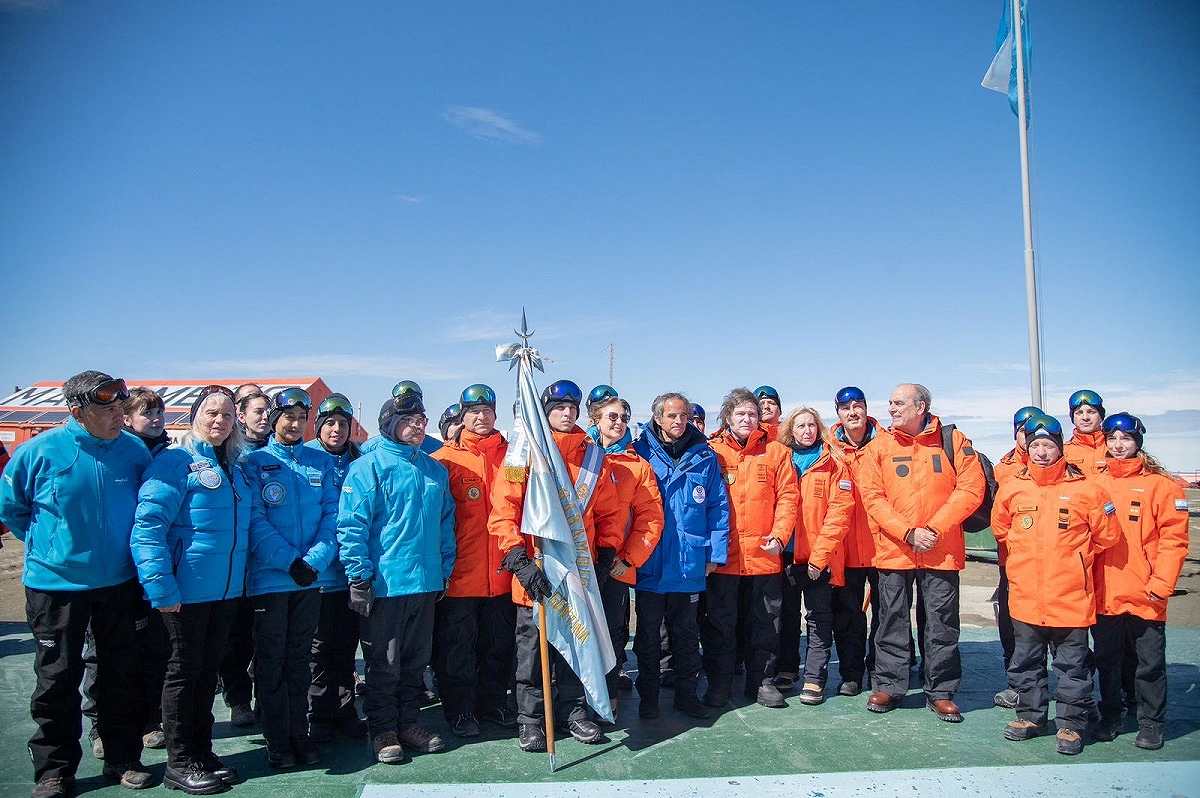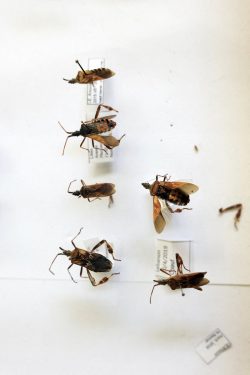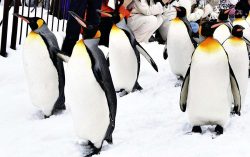
Argentina’s President Javier Milei poses for a picture next to Director General of the International Atomic Energy Agency Rafael Grossi, at Base Marambio, Antarctica on Jan. 6.
12:31 JST, January 18, 2024
BUENOS AIRES (Reuters) — The amount of microplastics in the Antarctic is being analyzed by using nuclear science to study the region’s waters, sediment and even penguin droppings.
The new joint investigation launched by the U.N.’s International Atomic Energy Agency (IAEA) and the Argentine Antarctic Institute (IAA) is part of the IAEA’s NUTEC Plastics Initiative that has looked at microplastic pollution in countries around the world.
Rafael Grossi, director general of the IAEA, said that by using nuclear applications, it was possible to determine with good accuracy the amount of pollutants found on the seabed and also where they had come from.
“The health of Antarctica is essential for the health of the planet,” Grossi told Reuters from the “white continent,” which he visited on Jan. 6 with Argentine President Javier Milei.
“Microplastics are affecting the environment and this place is no exception.”
The program will use Argentine icebreaker Almirante Irizar and scientists will take samples from penguin guano, sediment from the seabed and from the water around the ice sheet to analyze at Argentina’s Carlini Base in the Antarctic. Others will be sent to the IAEA research center in Monaco.
“We are paying special attention to the smallest fraction of microplastics and trying to identify their origins,” said Lucas Ruberto, researcher at the IAA, adding they would then identify how to clean them up and even prevent them in the first place.
“Also if they’ve been carried by sea currents from other parts of the planet or are generated in Antarctica itself.”
Ruberto said microplastics — particles smaller than 5 millimeters — were a global problem due to the large use of plastics and were harmful to life, because they are often ingested, causing accumulation within organisms that can lead to diseases.
“It’s estimated that since its introduction into the market, 7 billion tons of plastic have been dumped into the environment, a large part of them in the marine environment,” he said.
"Science & Nature" POPULAR ARTICLE
-

Mass Oyster Die-Offs Confirmed in Japan’s Seto Inland Sea; High Water Temperature Cited as Primary Cause
-

Genome Study Reveals Milestone in History of Cat Domestication
-

Big Leap in Quest to Get to Bottom of Climate Ice Mystery
-

Security Camera Footage Vulnerable to Outside Access; Investigation Finds 3,000 Pieces Exposed Online
-

Paws on Parade: Nairobi’s Dogs Dazzle at ‘Pawchella’
JN ACCESS RANKING
-

Keidanren Chairman Yoshinobu Tsutsui Visits Kashiwazaki-Kariwa Nuclear Power Plant; Inspects New Emergency Safety System
-

Imports of Rare Earths from China Facing Delays, May Be Caused by Deterioration of Japan-China Relations
-

Japan Pulls out of Vietnam Nuclear Project, Complicating Hanoi’s Power Plans
-

Govt Aims to Expand NISA Program Lineup, Abolish Age Restriction
-

Blanket Eel Trade Restrictions Rejected























